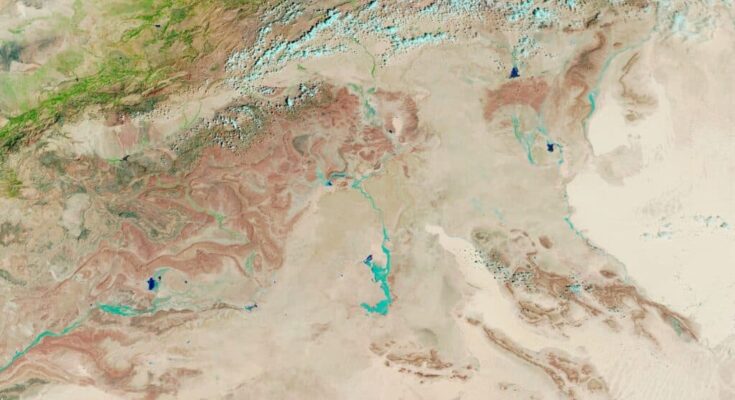
Areas of the barren land of the Sahara Desert have surprisingly turned green after unusually heavy rainfall, NASA satellite images show.
The Sahara Desert is one of the driest places on Earth, but it was once covered in vegetation and lakes between eleven thousand to five thousand years ago. The most recent transformation was the result of rainfall that left over half a foot of rain in some areas.
NASA satellite images reveal patches of plant life emerging in desert regions in Morocco, Algeria, Tunisia, and Libya. It is the result of an extratropical cyclone on September 7th and 8th that brought torrential rains on that part of northwestern Africa that rarely sees any.
However, while rain fell mostly on sparsely populated areas, floods killed more than one thousand people and affected four million people across fourteen African countries, damaging roads and disrupting electricity and water supplies, according to the World Food Programme and the Associated Press.
NASA’s Earth Observatory image shows shrubs and trees growing in low-lying areas such as riverbeds in the Sahara. According to scientists, plant life responds quickly to heavy rain events in northwestern Africa for a brief period of time, turning sand dunes into green landscapes.
“While [there is] some degree of rainfall in this region…every summer, what’s unique this year is the involvement of an extratropical cyclone,” said Moshe Armon, a senior lecturer at the Institute of Earth Sciences and the Hebrew University of Jerusalem.
Climate change caused parts of the Sahara Desert to turn green
The unusually heavy rainfall was triggered by the northward movement of the tropical rain belt, known as the Intertropical Convergence Zone (ITCZ), reaching farther north than usual. Typically, there are heavy rains in equatorial regions, but this time, they drenched the Sahara Desert, turning it green in certain parts due to the record rainfall amounts.
Specifically, the Southern Hemisphere winds blowing from the southeast converge with the Northern Hemisphere winds blowing from the northeast. The combination of converging winds, strong sun, and warm ocean water results in moist air and continuous clouds, rain, and thunderstorms.
According to a Washington Post report, scientists aren’t exactly sure why the ITCZ has wobbled so far north this year. It could be due to near-record warmth in the North Atlantic Ocean, increasing the temperature difference between the Northern and Southern hemispheres, said Francesco S.R. Pausata, an atmospheric science professor at the University of Quebec in Montreal who has studied the ITCZ.
There could also be a connection to global warming heating the Northern Hemisphere more than the Southern Hemisphere. “The Northern Hemisphere, as there is more land than the Southern Hemisphere, tends to warm up more and hence it could push the ITCZ further north,” Pausata said.
The heavy rainfall associated with the ITCZ has moved farther north than usual this year. The most significant increase in greenness in the Sahara Desert over last year is shown across the strip of north-central Africa covering southern Mauritania, southern Mali, Burkina Faso, southern Niger, northern Nigeria, southern Chad, southern Sudan, and portions of South Sudan, Eritrea, Ethiopia, and Kenya.
At the same time, southern regions that have received significantly less rain than usual—including Guinea, Ghana, central to southern Nigeria, Cameroon, far southeast Sudan, and a portion of western Ethiopia—have seen the greatest decrease in greenness compared to last year.



